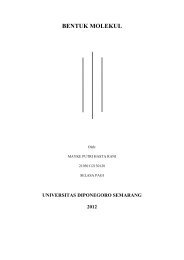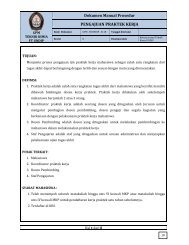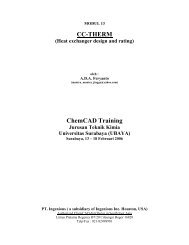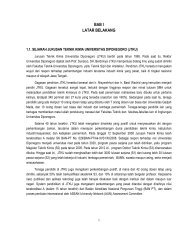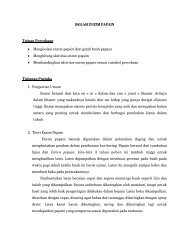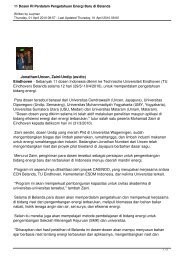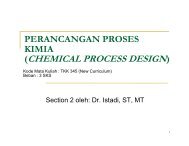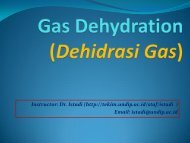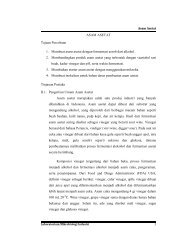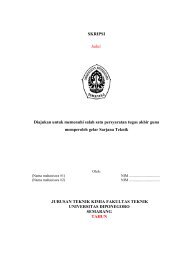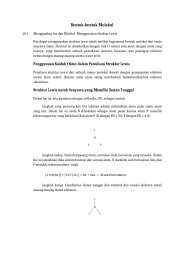Vinyl Acetate Monomer Process 10
Vinyl Acetate Monomer Process 10
Vinyl Acetate Monomer Process 10
You also want an ePaper? Increase the reach of your titles
YUMPU automatically turns print PDFs into web optimized ePapers that Google loves.
296 <strong>10</strong> <strong>Vinyl</strong> <strong>Acetate</strong> <strong>Monomer</strong> <strong>Process</strong><br />
Table <strong>10</strong>.6 Ideal input/output material balance.<br />
Input<br />
Output<br />
kmol/h kg/h kmol/h kg/h<br />
C 2 H 4 148.936 4170.213<br />
Acetic acid 140.000 8400.000<br />
O 2 96.809 3097.872<br />
VAM 140.000 12 040.000<br />
Water 157.872 2841.702<br />
CO 2 17.872 786.383<br />
Total 385.745 15 668.085 315.745 15 668.085<br />
In a preliminary stage we select a value of 94%, at the upper limit but realistic for<br />
modern catalysts. We deliberately set zero targets for losses. With this assumption<br />
the preliminary input/output material balance looks as in Table <strong>10</strong>.6 . Some observations<br />
of significance for design may be immediately drawn. Thus, the large<br />
amount of wastewater will involve non - negligible costs for neutralization and biological<br />
treatment. Similarly, the process develops inherently CO 2 . Therefore, some<br />
ecological penalties have to be taken into account when estimating the economic<br />
potential.<br />
<strong>10</strong>.4<br />
Reactor/Separation/Recycles<br />
The kinetic analysis has shown that because of incomplete conversion two recycles<br />
have to be considered, for both ethylene and acetic acid. Preferably, the recycle<br />
policy should ensure an ethylene/acetic acid ratio of about three. A strong safety<br />
constraint is the concentration of oxygen in the reaction mixture. In general, the<br />
oxygen concentration at the reactor inlet should be below 8 vol% in order to avoid<br />
ignition, based on an acetic - acid - free mixture [1] . Note that in the stoichiometric<br />
mixture this is of 20%. The presence of a gaseous inert is recommended for better<br />
safety and control of the reactor temperature. Some reports indicate the use of<br />
ethane, since this is present as impurity in the fresh feed [6] , but this solution is<br />
not adopted here. Since CO 2 is produced by reaction in large amount its use as an<br />
inert would be the most economical. Indeed, several technology reports indicate<br />
this possibility in an amount of <strong>10</strong> – 30% vol [2, 14] . However, since CO is a catalyst<br />
poison its presence in the recycled gas has to be prevented.<br />
The chemical reactor will be designed in the context of a recycle system, as<br />
explained in Chapters 2 and 4 . The strategy is fixing the flow rate and composition<br />
of the reactor - inlet mixture at values that are compatible with the operation requirements<br />
of the catalyst, as given in Table <strong>10</strong>.3 , for example 50% mol C 2 H 4 , 20% mol<br />
acetic acid, 6% mol oxygen and 24% mol CO 2 . Figure <strong>10</strong>.2 presents the simulation



